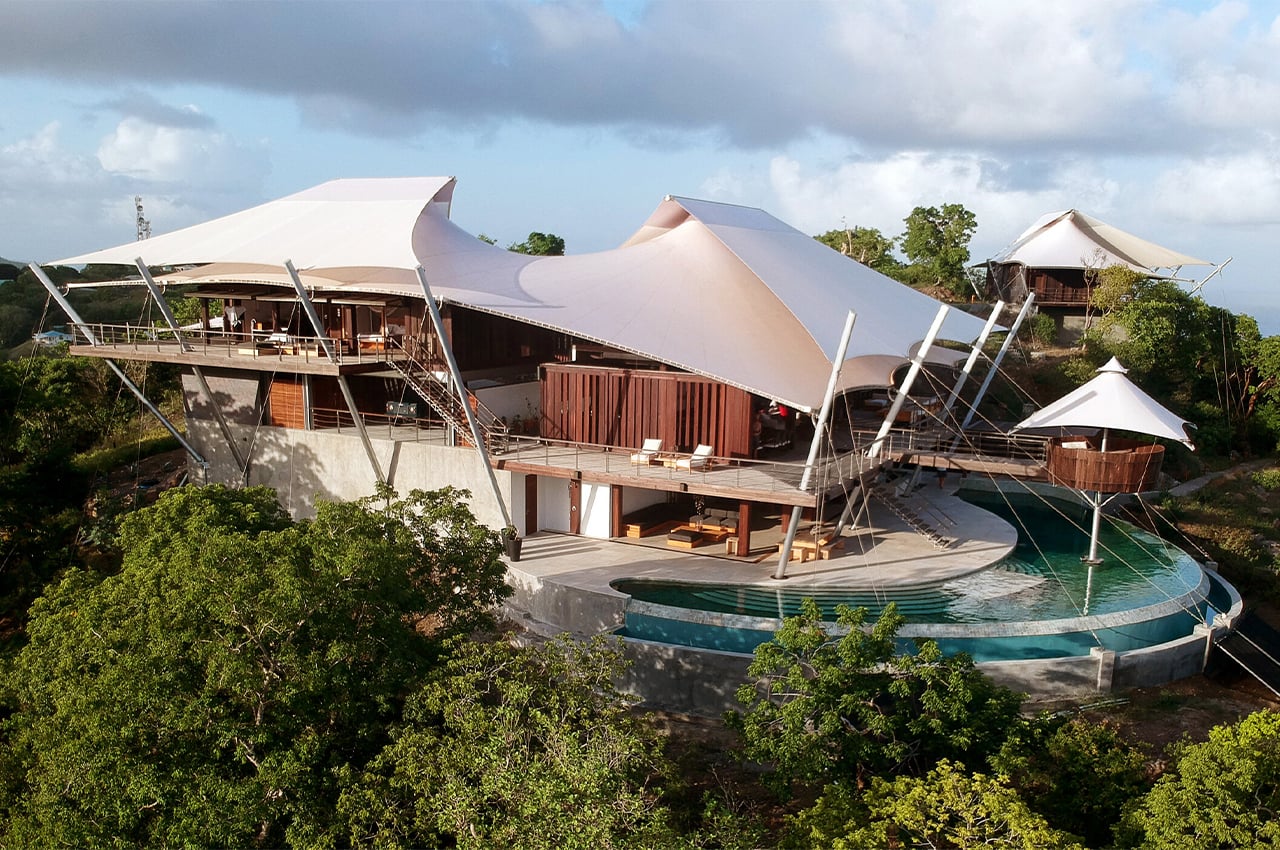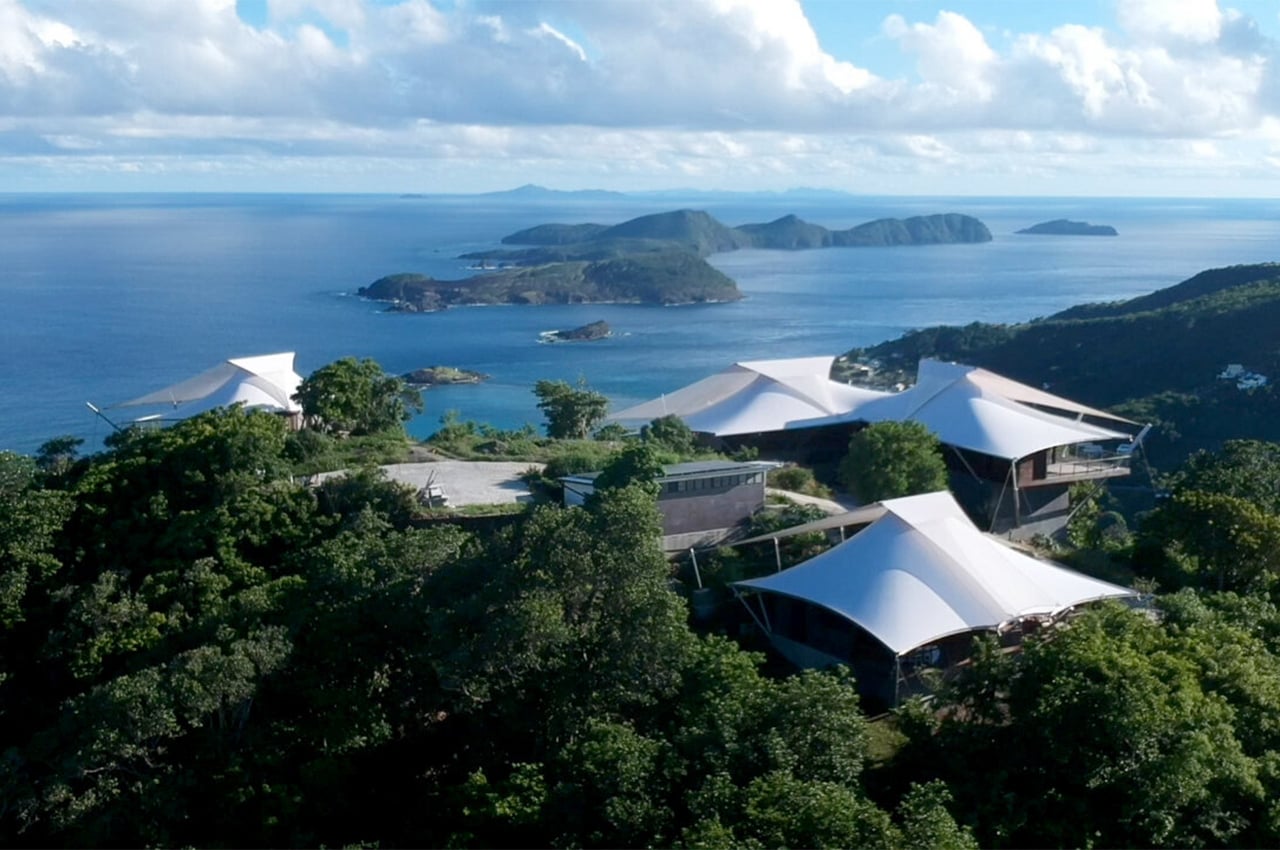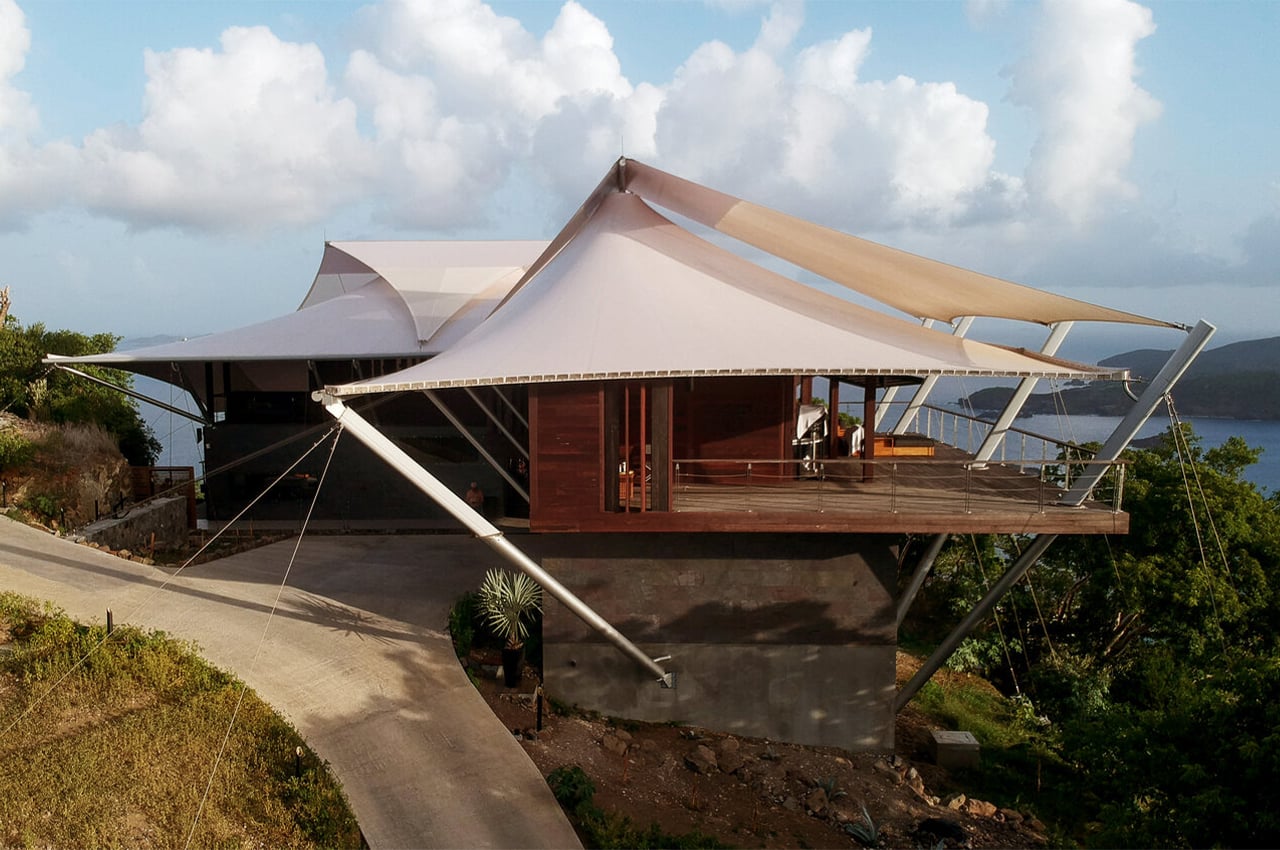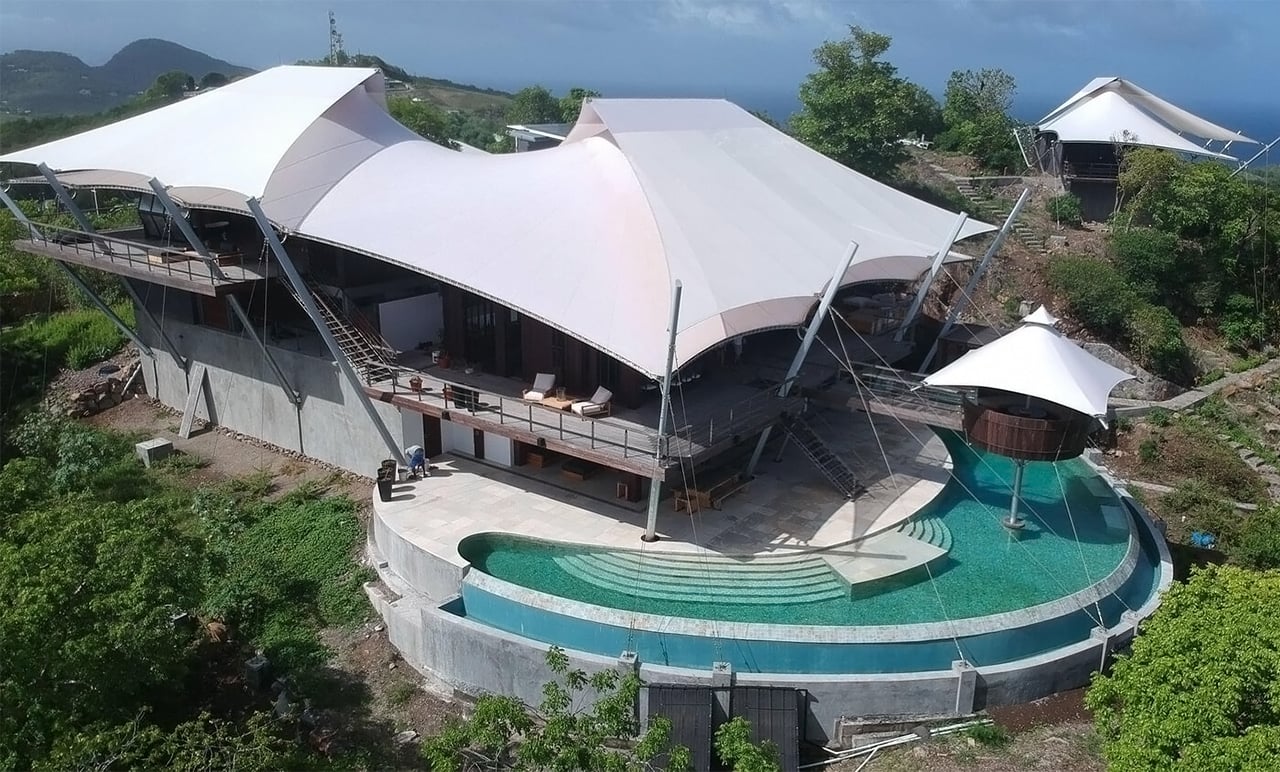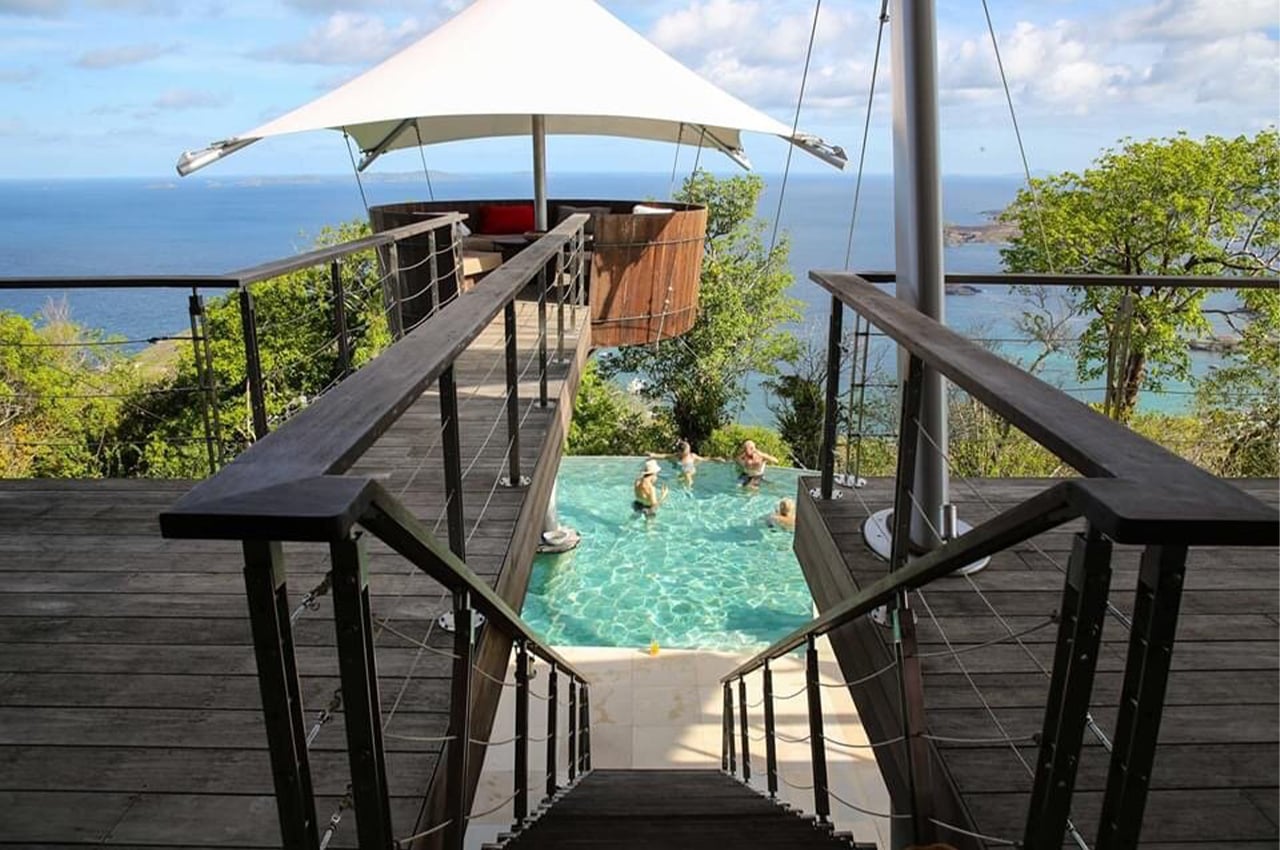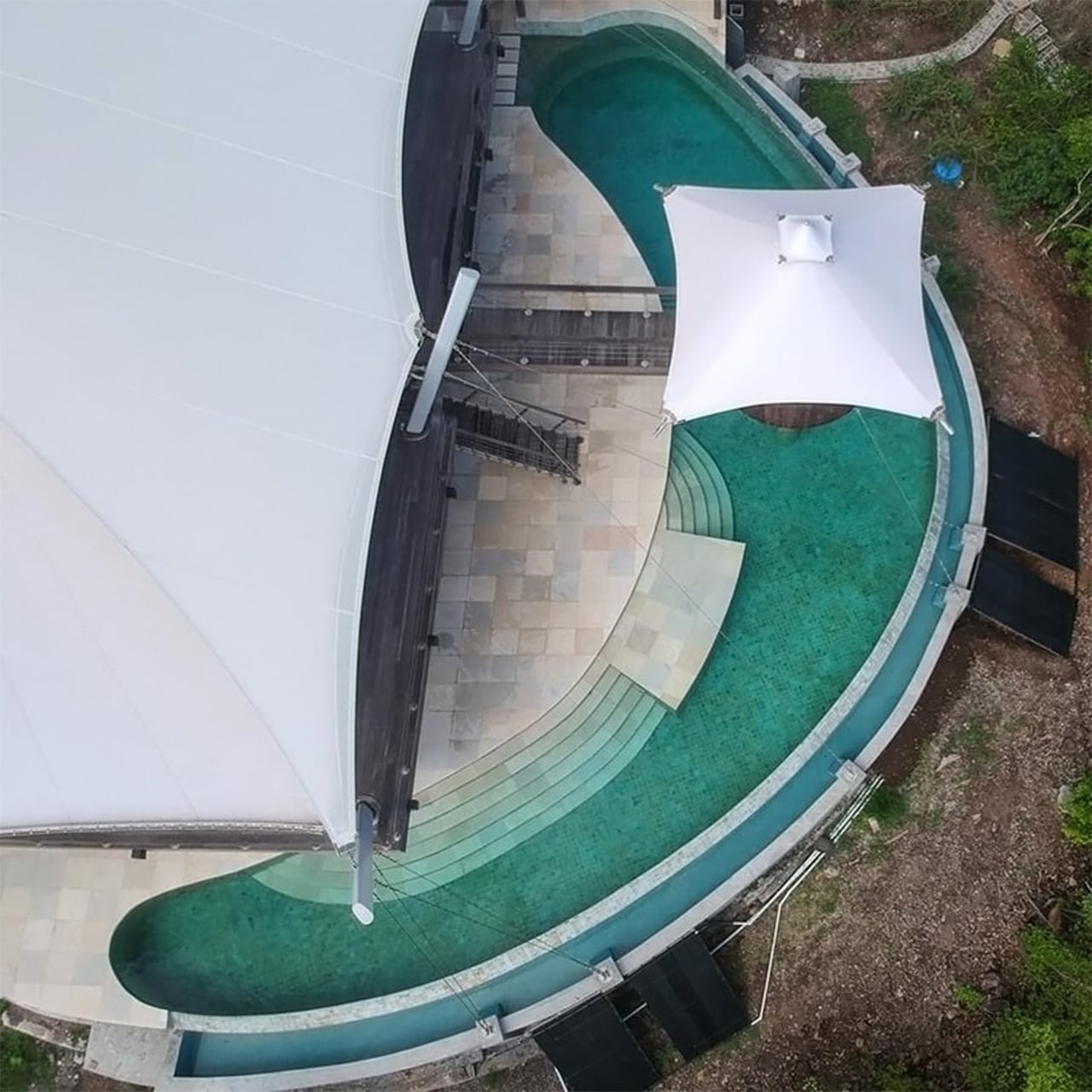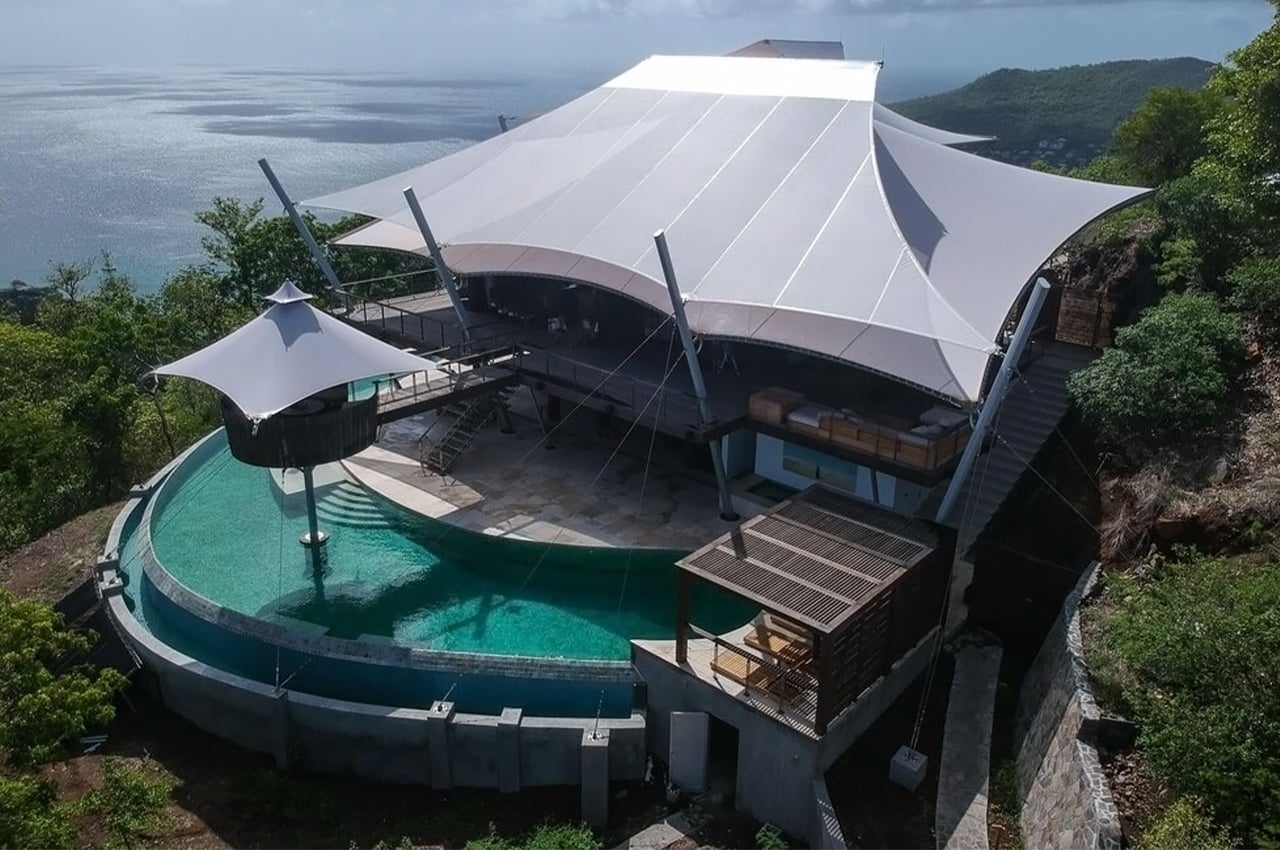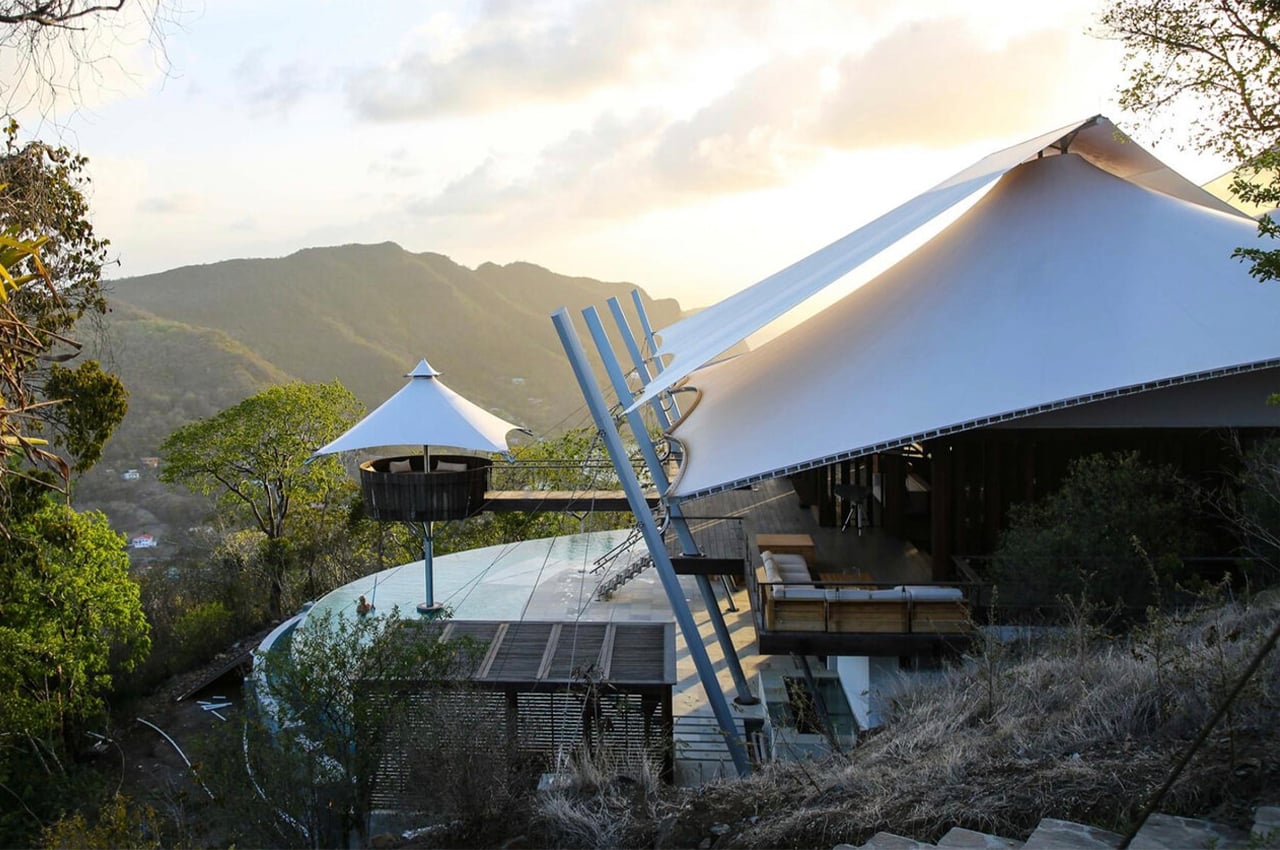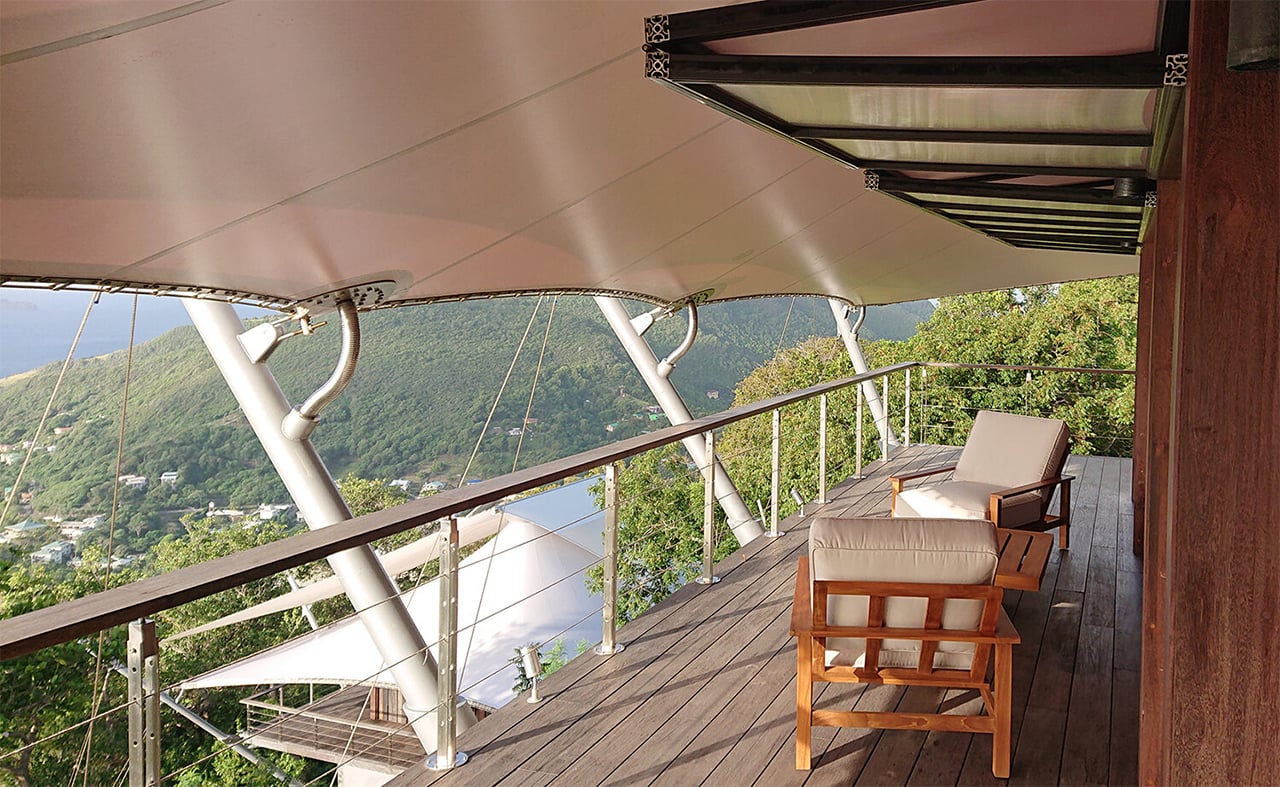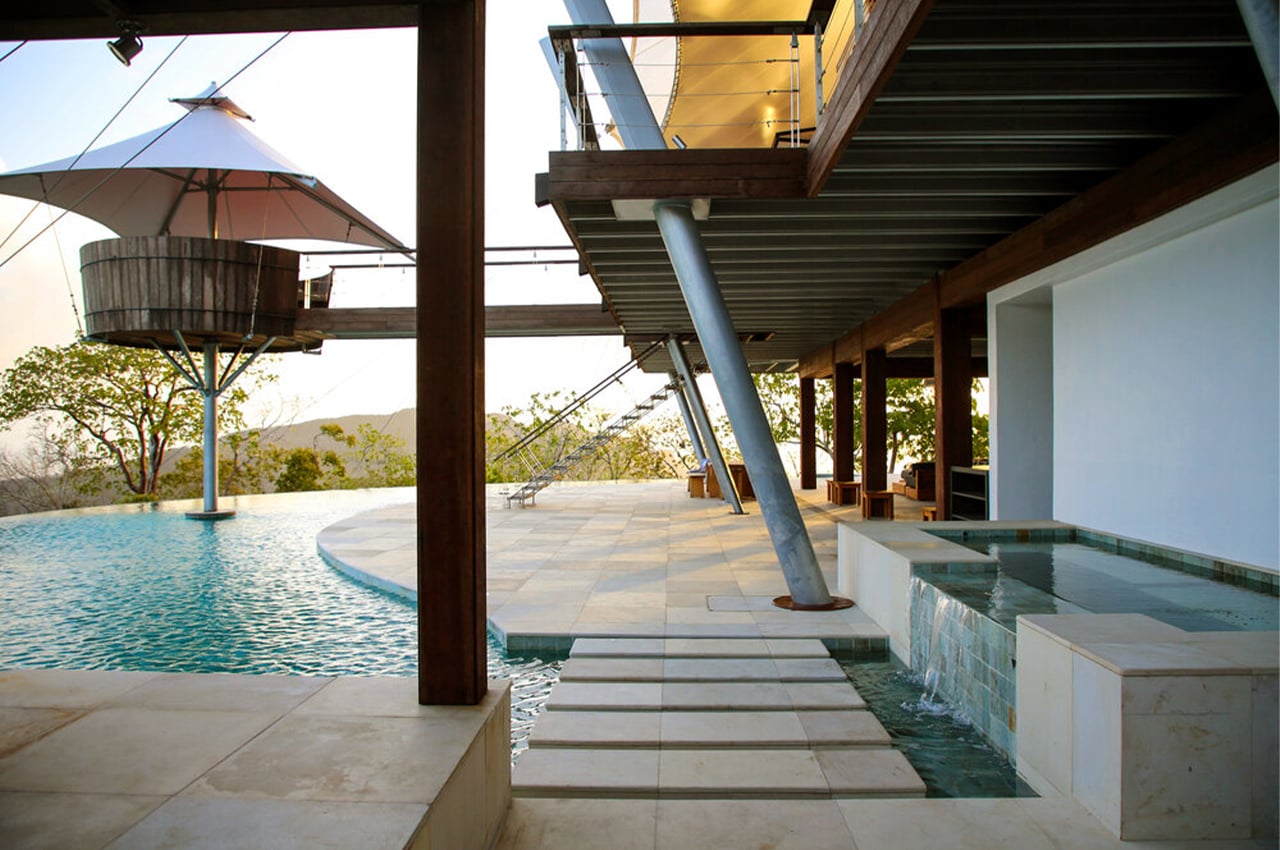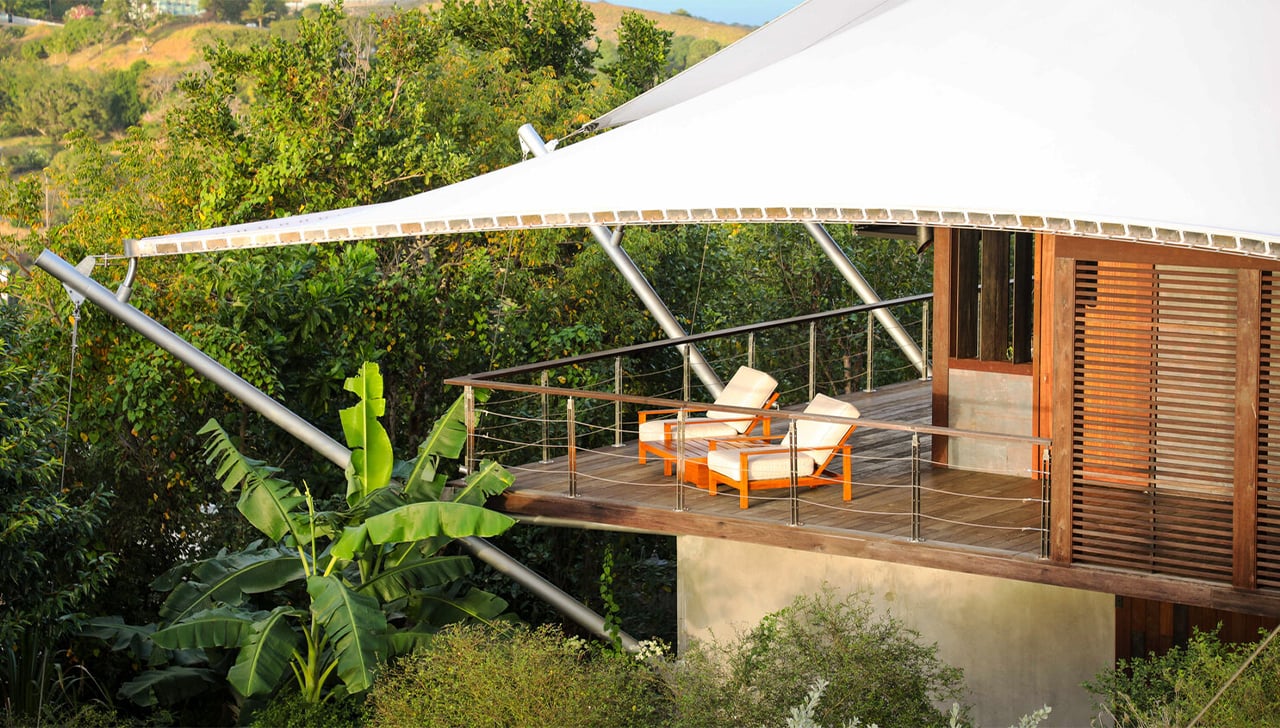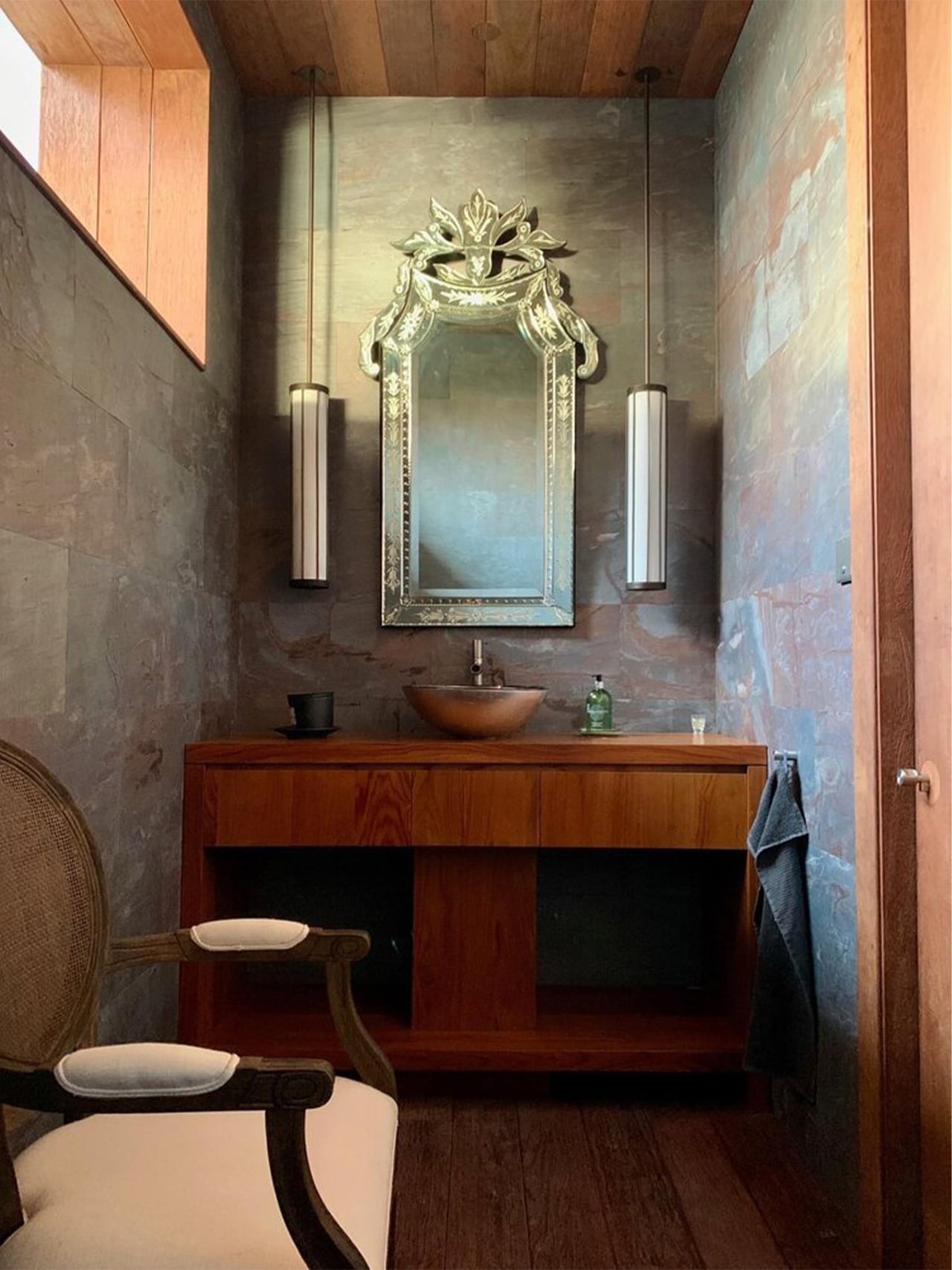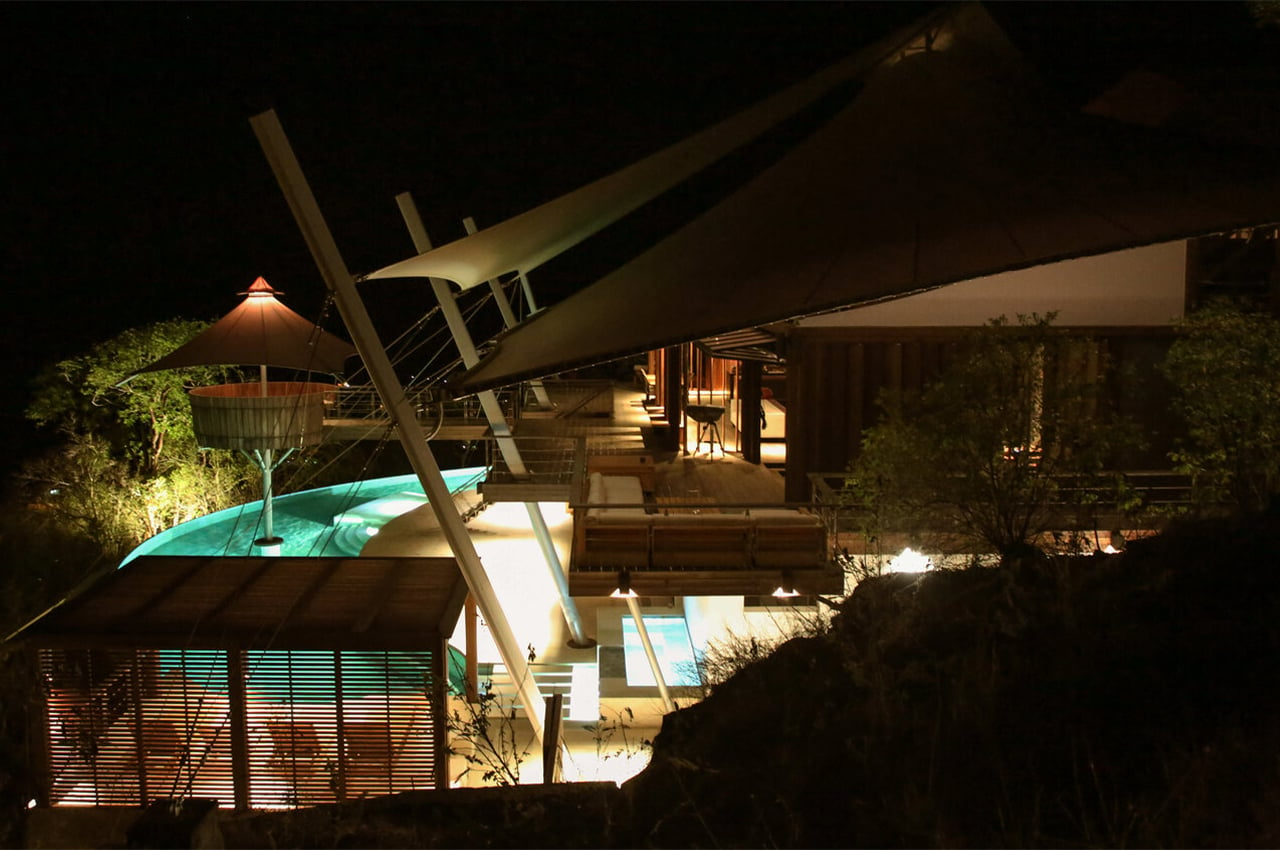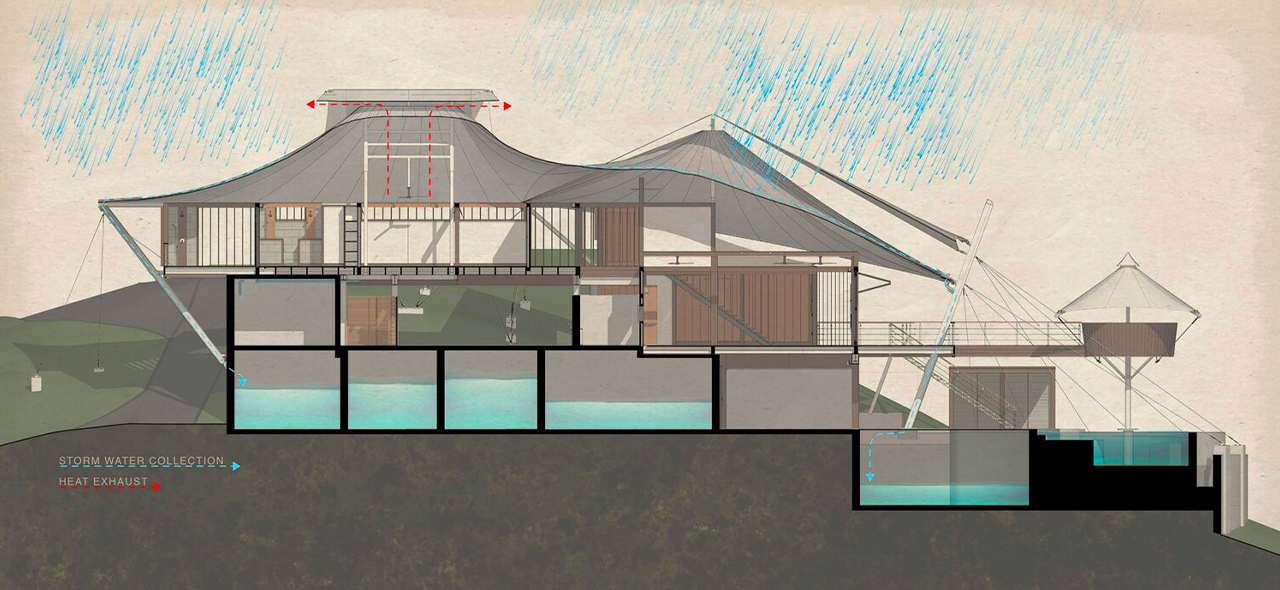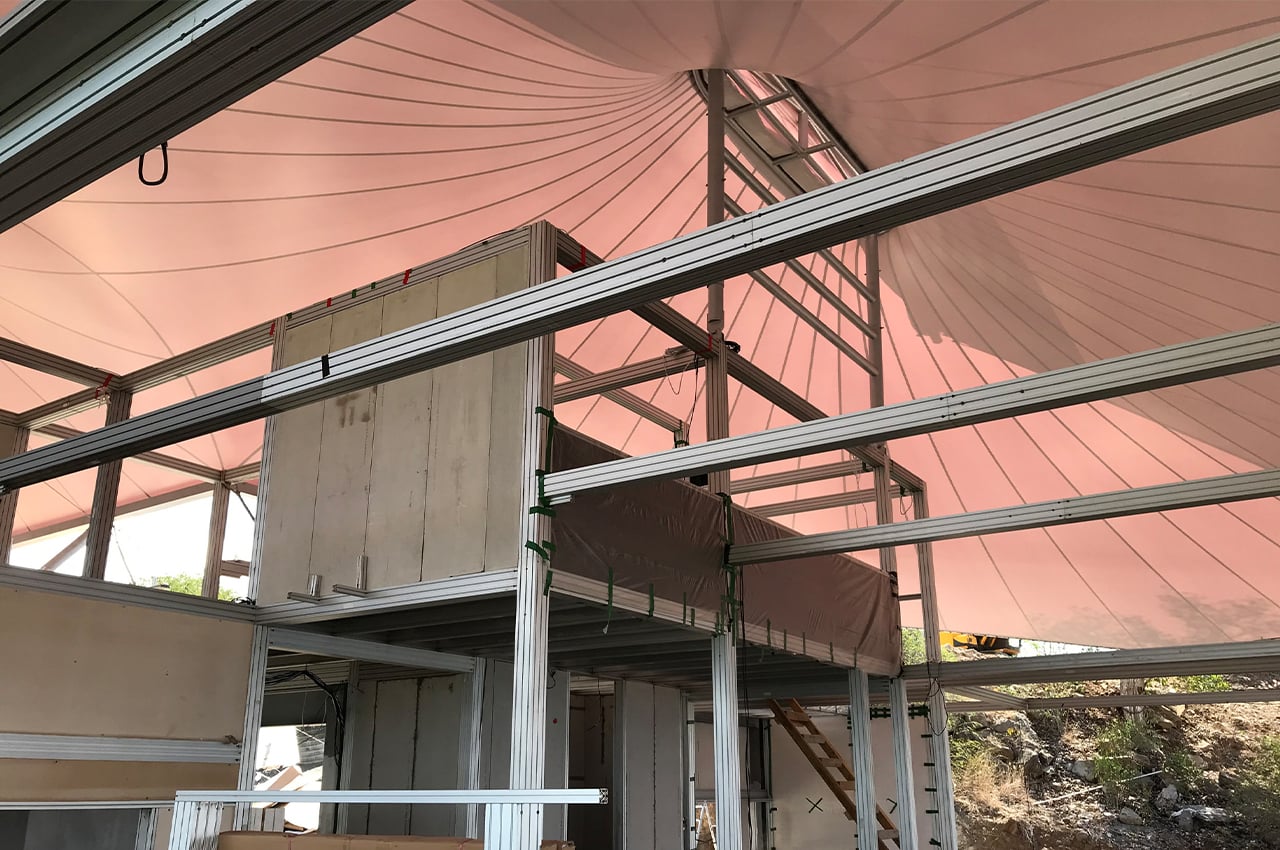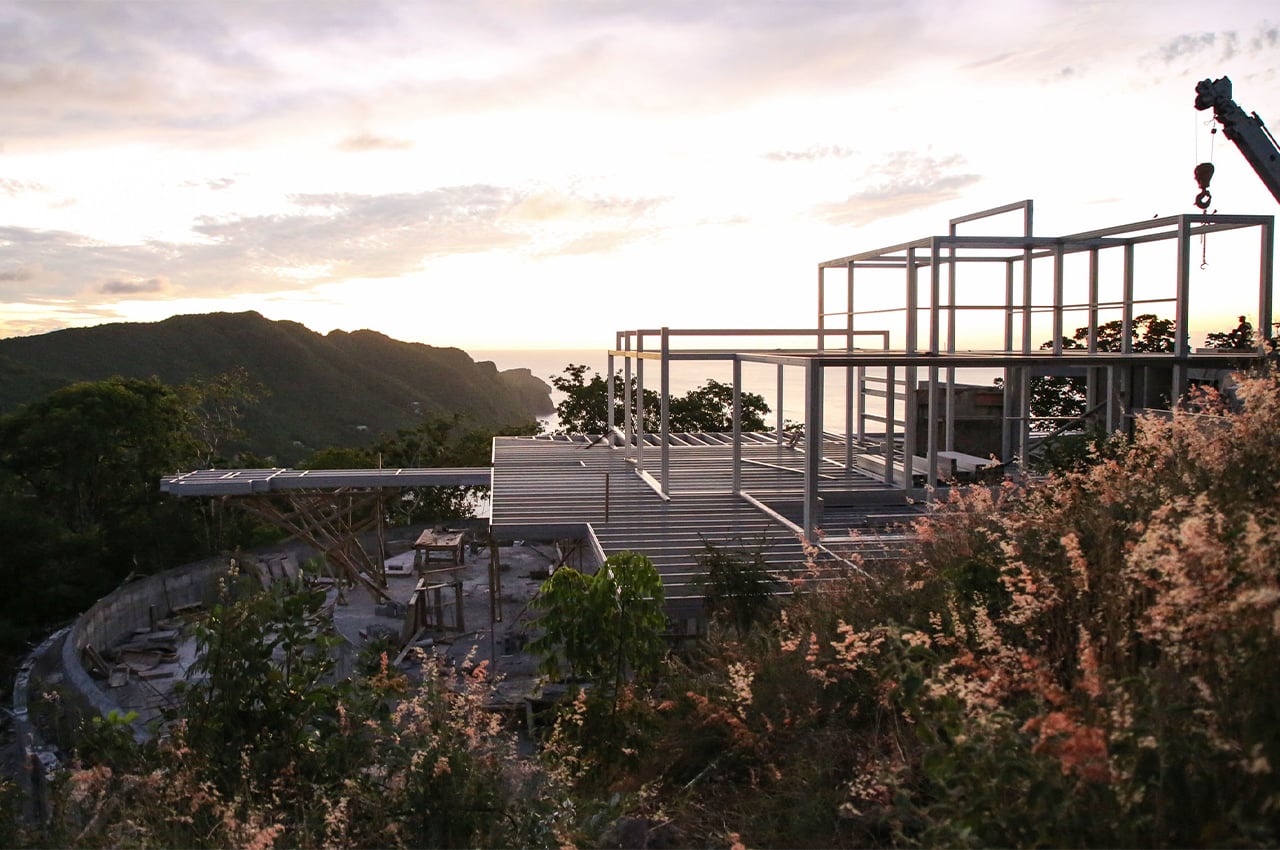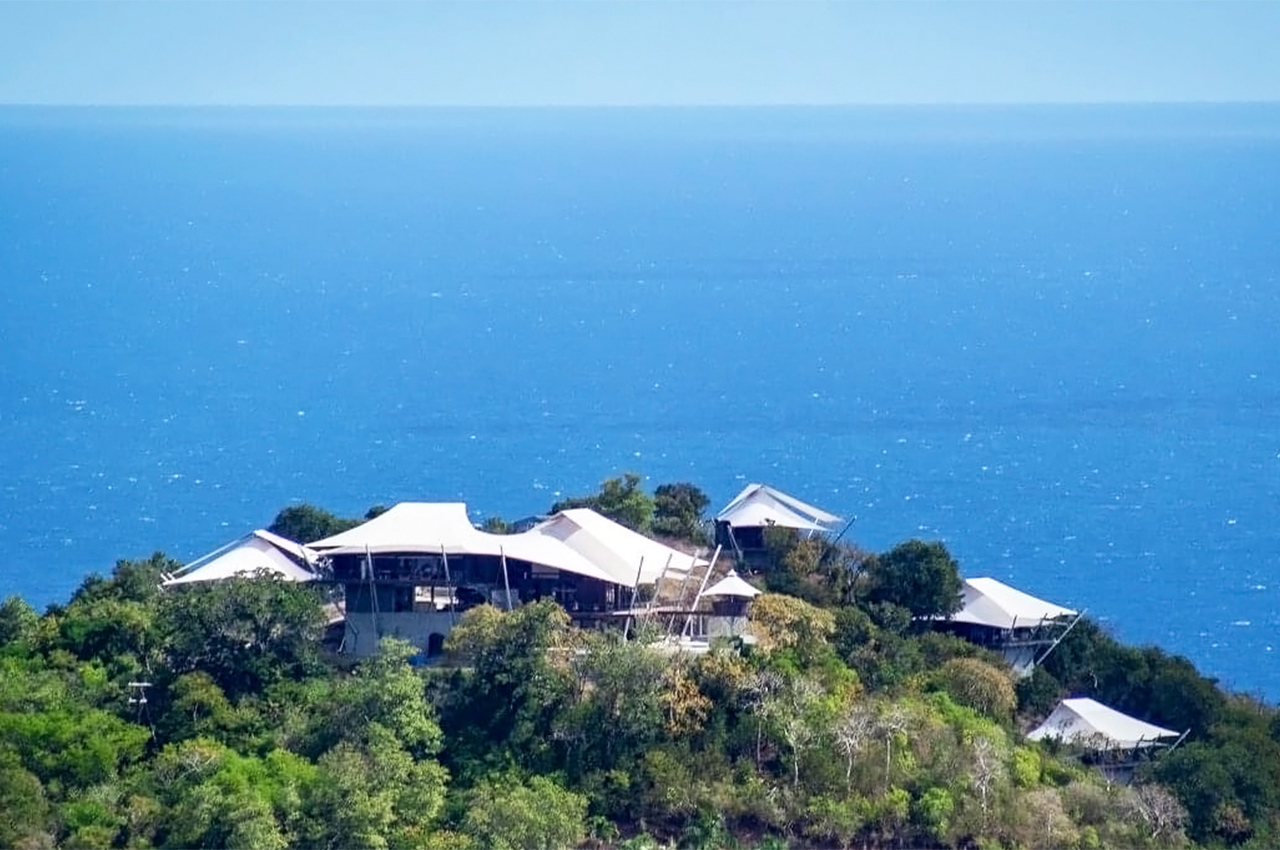When you can’t go on a cruise, you bring the cruise home – literally! The Sail House is a spacious, self-sufficient, nautical-themed home with a unique form inspired by large white sails on ships. It is designed by Los Angeles-based architect David Hertz who is celebrated for sustainable architecture. Sail House was also selected as the 2021 Architizer A+Awards Jury Winner for Residential/Private House!
Sail House has a central structure called the main house with several guest houses bordering it and all nestled on the lush Bequia Island in the Caribbean – didn’t I say it literally brings a cruise home? Since the Caribbean is a notoriously difficult area to source building materials, the team made sure that the entire project – the main house and the guesthouses – were prefabricated offsite, flat-packed, and delivered in 15 shipping containers. This ensured minimal site impact to the sensitive ecosystem and was nearly zero waste which is important because otherwise, the construction waste would have had to be transported out of the island which would increase emissions.
The luxurious home was named after its eye-catching tensile roofs inspired by the history of sailing on the island. “The main inspiration for the Sail House was a wooden boat with its masts and sails, the expressed stainless steel rigging and hardware, which is referenced in the home,” said Hertz. The roof membranes also act as a rain collection system by funneling water into a concrete foundation for storage. This nifty system provides for 100% of water needs and the air pulled from the stored water is then used to cool the space when needed. Additionally, the cantilevered roofline provides more shade and ventilation to increase cooling naturally. The electricity needs are covered by solar panels.
Both the interior and exterior of Sail House include natural construction materials such as woven palm, coconut shell fragments and surfaces crafted by Javanese and Balinese artisans. “Sustainability was one of the main goals of the Sail House project. The non-corrosive and termite-resistant aluminum structural system is wrapped in reclaimed ironwood planks recycled from an abandoned pier in Borneo, as are the plank floors, decks, and the vertical louvers that control low sun and prevailing breezes,” Hertz explained. It is truly one of the most beautiful, resilient, and functional homes I’ve seen that flawlessly balances luxury with sustainability!
Designer: David Hertz Architects
